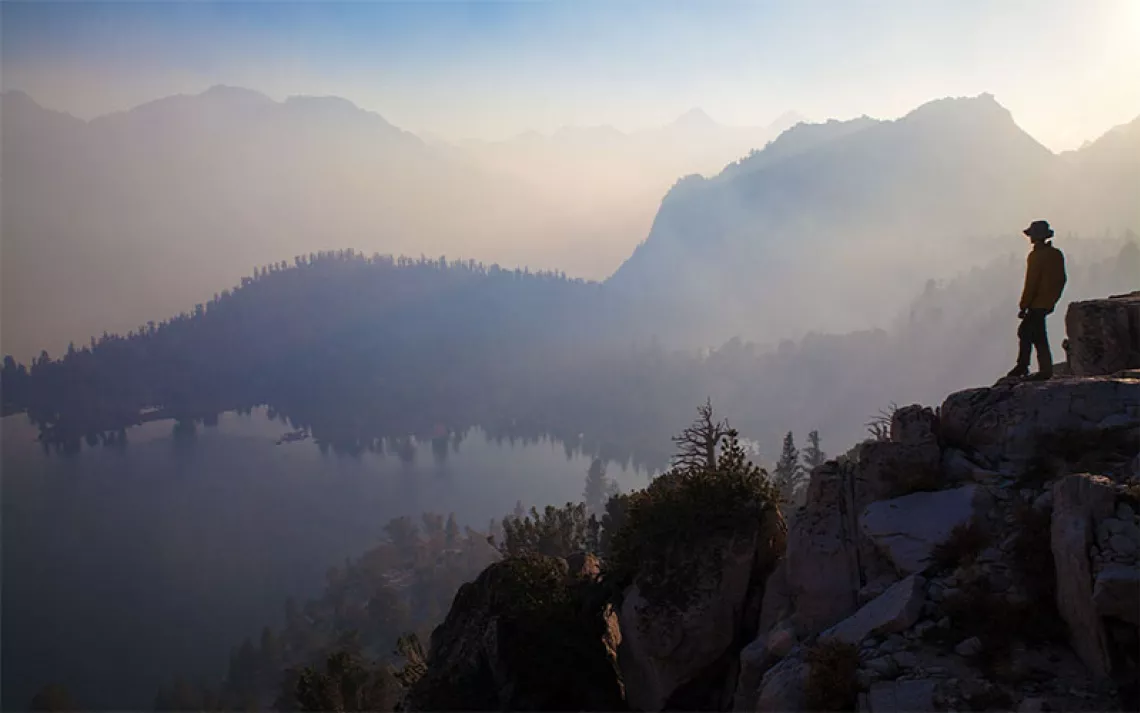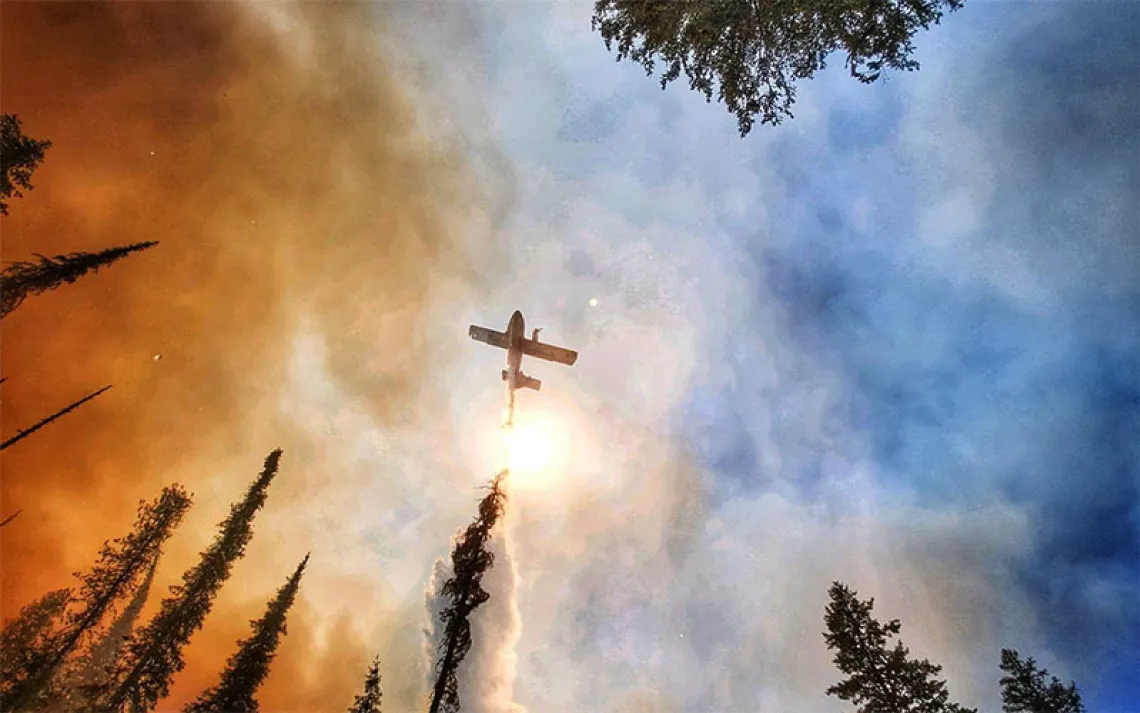Canada's Next National Park
Conservationists, recreationists, and developers collide over the Okanagan

Photo by robynleigh/iStock
The western Great Basin is a vast region of hot summers, mild winters, and little rain. From Mexico, the basin unfolds north for more than 1,500 miles before poking across the US-Canada border into British Columbia's Okanagan Valley. Within an area roughly the size of Portland, Oregon, a visitor can experience one of Canada's most unusual and beautiful landscapes. There’s the arid ecosystem of sagebrush, reminiscent of the Arizona desert; golden hills of bunchgrass that could be South Dakota; highlands of ponderosa pine and Douglas fir forests overlooking a river valley that could pass for the Rocky Mountain foothills. After nearly two decades of efforts to protect this unique ecosystem, Canada could find its next national park here, in the heart of BC's wine, golf, and beach country.
Last summer, the long-anticipated and fiercely debated South Okanagan-Similkameen National Park Reserve got one step closer to becoming a reality. On July 3, 2019, the government of Canada, the province of British Columbia, and the Syilx/Okanagan Nation, which represents six Okanagan-area Indian bands, signed a Memorandum of Understanding (MOU) laying the groundwork for future negotiations.
"It's an important milestone for sure," says Richard Cannings, a member of parliament for the South Okanagan–West Kootenays and the left-leaning New Democratic Party's natural resources critic. "I grew up in these grasslands, and it's one of the top-four endangered ecosystems in Canada."
But the development of national parks in North America can be polarizing, and like many before it, the Okanagan has created a collision among conservationists, recreationists, and developers. In Canada, where First Nations often have a bigger, though imperfect, seat at the table when it comes to ecological preservation, this new agreement in no way seals the deal.
Cannings is one of many conservationists who support the park, which by Canadian standards is small at roughly 120 square miles (Banff National Park, Canada's first national park, established in 1888, is more than 20 times larger). The park would be composed of a patchwork of existing provincially protected lands, open crown land, and private parcels. More than 30 federally listed species at risk and 60 provincially listed species (11 percent of all listed species in Canada) live within these theoretical national park boundaries. It's a naturalist's paradise and also unfinished business for Parks Canada: BC's southern grasslands is one of 39 eco-regions identified in the national parks plan as a distinctive component of the national landscape, but so far lacks national park representation.
However, Cannings, who moonlights as a biologist and field guide author, is also cautious. People want to live and play in the Okanagan. Changing normalized patterns of behavior on the landscape, whether it's ATVing or hunting, is an uphill battle. And the issue has divided communities like nearby Oliver, whose 5,000 residents live within four miles of the proposed park's eastern boundary. In April, the anti-national-park group known as the South Okanagan Similkameen Preservation Society (SOSPS) held a public meeting that drew 300 people, and many in attendance were opposed, including Rick Knodel, a regional director for the Okanagan, who likens a national park to sacrificing local sovereignty to the federal government. Antipathy toward Parks Canada and the federal government runs deep among SOSPS members. The group's spokesman, Lionel Trudel, an Okanagan Valley–based photographer, insists the group supports conservation of the area's unique grasslands, just not by bureaucrats based in Ottawa.
"We as a society are looking elsewhere for solutions, and we don't want Parks Canada as an entity in this region," Trudel says. He worries that the potential of thousands of new visitors a national park would bring to an already busy Okanagan Valley tourism corridor would add unwanted pressure to policing, ambulance services, and other resources as well as more traffic to an already crowded Highway 97. Trudel also says his group is concerned about potential special hunting rights for First Nations in a national park reserve that would otherwise be off-limits to hunters, ATVs, and other user groups.
For park opponents worried about hunting access, park advocate Don Gayton points out that national parks can act as a refugia for wildlife, which could benefit hunters in the long run. Though for Gayton, an American-born Vietnam War resistor and grasslands ecologist who lives about 25 miles from the proposed park's northern boundary, concerns about lost hunting opportunities rank low in importance.
"Species like antelope brush, badgers, and tiger salamanders are at the very northern end of their range. Their genetics are important because they've had to adapt," Gayton says. "This is an extremely rare and important region ecologically."
SOSPS is advocating for a protection model based on the Okanagan-Shuswap Land and Resource Management Plan. Though Trudel could not provide details around how such a model would be regulated or funded, he says it would be "locally managed."
There is definitely no love lost between SOSPS and Parks Canada. Prior to July’s MOU, the federal agency held a series of 39 informational meetings in the spring attended by over 600 people. The agency also received feedback on the park proposal from another 2,848 people in the form of surveys. The results reflected a sharp divide: 49 percent mostly saw benefits to a national park while 41 percent expressed concerns around issues like land access and hunting and recreation restrictions. Of the seven key recommendations emerging from the engagement process, most related to improving Parks Canada communication and outreach with the public, community groups, and local government.
The process has been unnecessarily opaque at times, according to Cannings, and Parks Canada could do better at responding to public concerns in a timely fashion. However, he believes much of the concerns are based on misinformation that continues to be spread among anti-park activists, such as the claim that Parks Canada will expropriate private land and drive out cattle ranchers—neither of which is true, Cannings says. Parks Canada has repeatedly made it clear that "no lands will be expropriated as part of a national park reserve."
"It's frustrating to be going to public meetings 17 years into the process and still hear people talking about expropriation," Cannings says. "Honestly, I think there's a lot of mistrust and dislike of the federal government that's behind this."
Not only do conservationists clash with anti-park activists, but also BC’s southern grasslands face pressures from urban sprawl, vineyards, tourism, and other competing land uses. According to Don Gayton, the grasslands "get no respect." "In mountain parks, the scenery with all the waterfalls, glaciers, and mountains does all the work for you. In grassland country, you have to do the work and get down on your hands and knees to truly appreciate it. If you put in the effort, the quiet and amazing diversity is breathtaking," Gayton says. "But this is a challenging place to create a national park. It's basically a suburban area."
But these clashes matter little without First Nations consent. Indigenous settlement in the southern Okanagan dates back thousands of years. Spotted Lake, along Highway 3, with its curious kaleidoscopic alkaline patterns, is part of the proposed park and is sacred to the Osoyoos Indian Band. Clarence Louie, the OIB's tough-talking chief, scoffs at park opponents who suggest a national park would lead to increased crime and wildfire risk, two tropes that are commonly trotted out at anti-park meetings. He also believes much of the opposition is rooted in white people's mistrust and resentment of Indigenous rights and title in the lands under question.
Members of the OIB and the five other bands that form the Syilx/Okanagan Nation are far from uniformly in favor of the park. For example, 67-year-old Uthlxanica is a Syilx elder who views a national park as an extension of colonialism. However, their leadership has expressed support in principle. Chief Louie says much work needs to be done before the distinct brown and yellow Parks Canada signs start appearing in Okanagan and Similkameen territory.
"We don't have all the information. There needs to be hundreds of more meetings and discussions," Louie says.
With all the competing interests, for folks like Gayton, national park advocacy is a test of endurance. "The average timeline for creating a national park is 30 years,” says Gayton, who hopes to see one come to fruition in his lifetime. “So I guess we're about halfway there.”
 The Magazine of The Sierra Club
The Magazine of The Sierra Club



